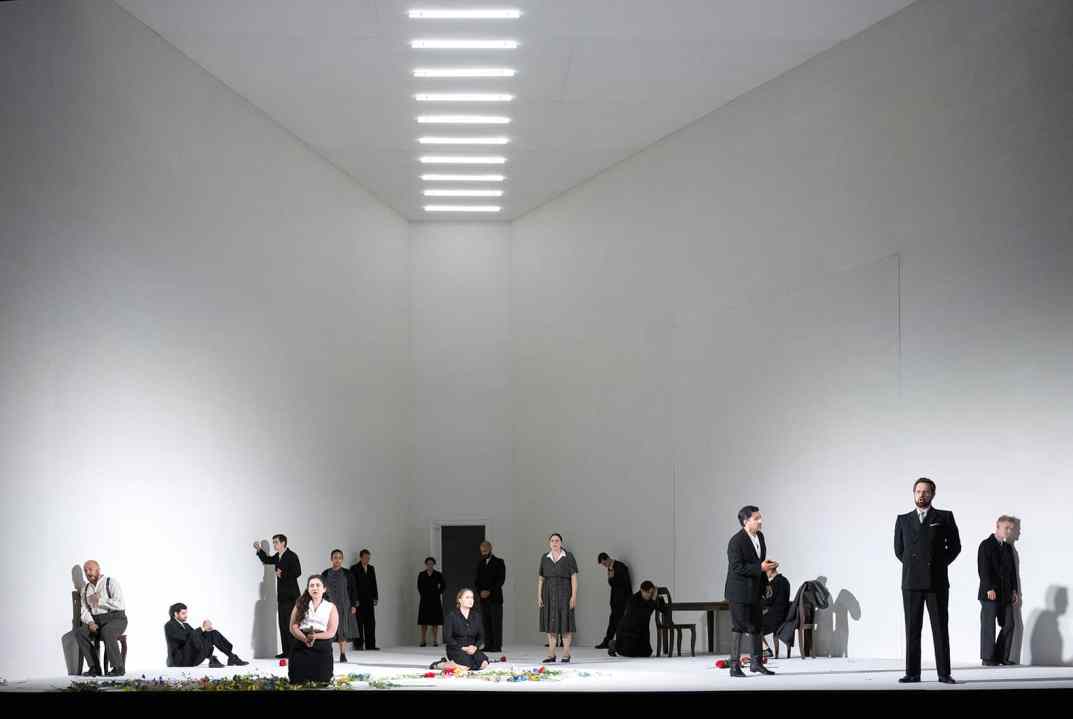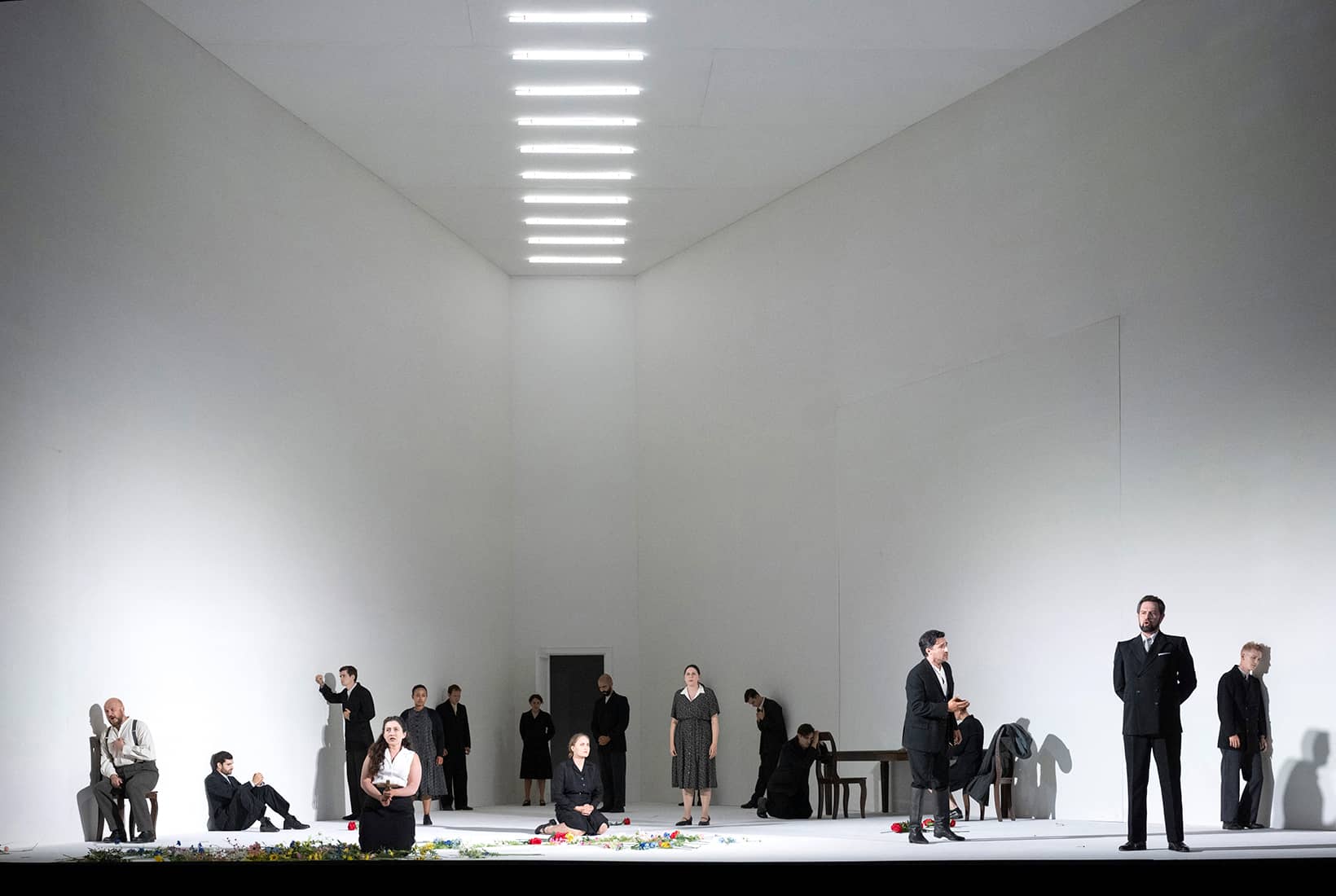Opera buffs enjoy their jargon. We all do it, scattering words like ‘spinto’ and ‘Fach’ like an enthusiastic pizza waiter with an outsize peppermill. It’s principally a means of signalling that you’re part of the club. But occasionally it’s genuinely useful, and Glyndebourne’s new production of Verdi’s Luisa Miller had me thinking about the concept of ‘tinta musicale’, a term used to describe Verdi’s sense that each of his operas should have its own distinctive sonic colour. The late-summer warmth that suffuses Falstaff, for example, or the maritime translucence of Simon Boccanegra. Or take La traviata: the enervated violins of the prelude, the hectic brilliance once the curtain rises. Already, you’re right there at the fevered extremes of the illness that defines the plot. Once you’re attuned to the idea, Verdi’s palette gives even an identikit early-period melodrama like Luisa an atmosphere that’s entirely distinctive.
In this case, it’s a German Romantic sound-world of baleful clarinets, hunting horns and low, surging string melodies that (at least to the sensibility of an Italian opera composer in the 1840s) makes a perfect fit for the Tyrolean setting of the opera’s source, Schiller’s play Kabale und Liebe. It was also the principal source of colour in Christof Loy’s production, which moves the story into the present day and locates it inside a vast empty white box, with the cast dressed in varieties of black and white formal wear. There are exceptions. Federica — a character who remains at one remove from most of the action — wears a peach-coloured ballgown, and as the opera opens Luisa is asleep on the floor while villagers scatter cut flowers on and around her. It’s a reference, though we don’t yet know it, to her Act III description of death as ‘a bed strewn with flowers’.
Nadine Benjamin was tremendous: pouring out her long curving lines with a fervour that glowed
By then, Luisa’s fate has almost run its course, and as the lighting throws shadows on the walls — dark, arresting figures that dwarf the stumbling humans on the stage beneath them — it’s possible to see how effectively Loy has isolated the fundamentals of the tragedy: all-too-human weaknesses that lead to stark, irrevocable consequences. That single–mindedness comes at a cost. There’s a lack of atmosphere, a confusing sameness of costume and setting, and the chorus sings entirely from off stage while a handful of extras adopt portentous attitudes behind the main characters.
So it all rests on the conviction of those central performances. It’s a precarious balance, which on the day I saw it had been given a brutal whack off-kilter by the absence of the advertised Luisa, Mané Galoyan — suddenly required to self-isolate in the middle of a season which has made the usual understudy system impossible. We’re not out of the woods yet, it seems. Instead, Roseanna Bell walked the role on stage while Nadine Benjamin sang from the Circle. Benjamin was tremendous: pouring out her long, curving lines with a fervour that glowed when quiet and burned with a controlled brilliance at the tops of phrases, crowning ensembles and choral numbers with a tingling halo of sound.
Vladislav Sulimsky, as her father, radiated compassion and dignity. Evgeny Stavinsky’s black velvet tone and youthful bearing brought the morally ambiguous Count Walter firmly into the realm of sympathy, and the tenor Ivan Magri, playing Luisa’s beloved Rodolfo, was properly heroic and thrilling to hear. Krzysztof Baczyk, meanwhile, was pale and sulphurous as the malignant Wurm. Jonathan Bloxham conducted; apparently this was his first Luisa, but it was so tautly paced that you wouldn’t have guessed it, with a lean, urgent London Philharmonic Orchestra getting right inside those doomy bass chords and lambent woodwind flurries. If it wasn’t really possible in the circumstances to decide if Loy’s directorial gambles fully paid off, the musical performances compensated so powerfully that the final curtain drew a standing ovation — with Benjamin deservedly receiving the loudest cheers.
This was achieved during a fortnight that has seen the LPO give four performances of Luisa Miller, as well as a dress rehearsal and three performances of Tristan und Isolde. Somehow the orchestra also found the reserves of energy and emotion to bid farewell to Vladimir Jurowski, its music director since 2007, in a brilliantly played Prom. The programme — Stravinsky’s Jeu de Cartes; Walton’s Cello Concerto (with an expressive but underpowered Steven Isserlis as soloist), some wry Bach orchestrations and Hindemith’s Mathis der Maler Symphony — was pure Jurowski: a Rubik’s Cube of cultural cross-references, conceived by an inquisitive, independent musical mind, and delivered with a focus that struck home all the more intensely for being so completely free of unearned sentiment. The maestro as intellectual has never been a popular model in this country, but Jurowski’s force of musical personality has consistently carried audiences, and by all accounts musicians, with him. He’ll be missed.







Comments